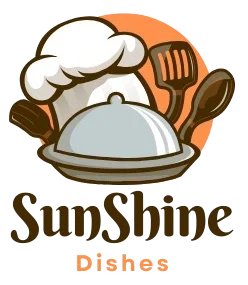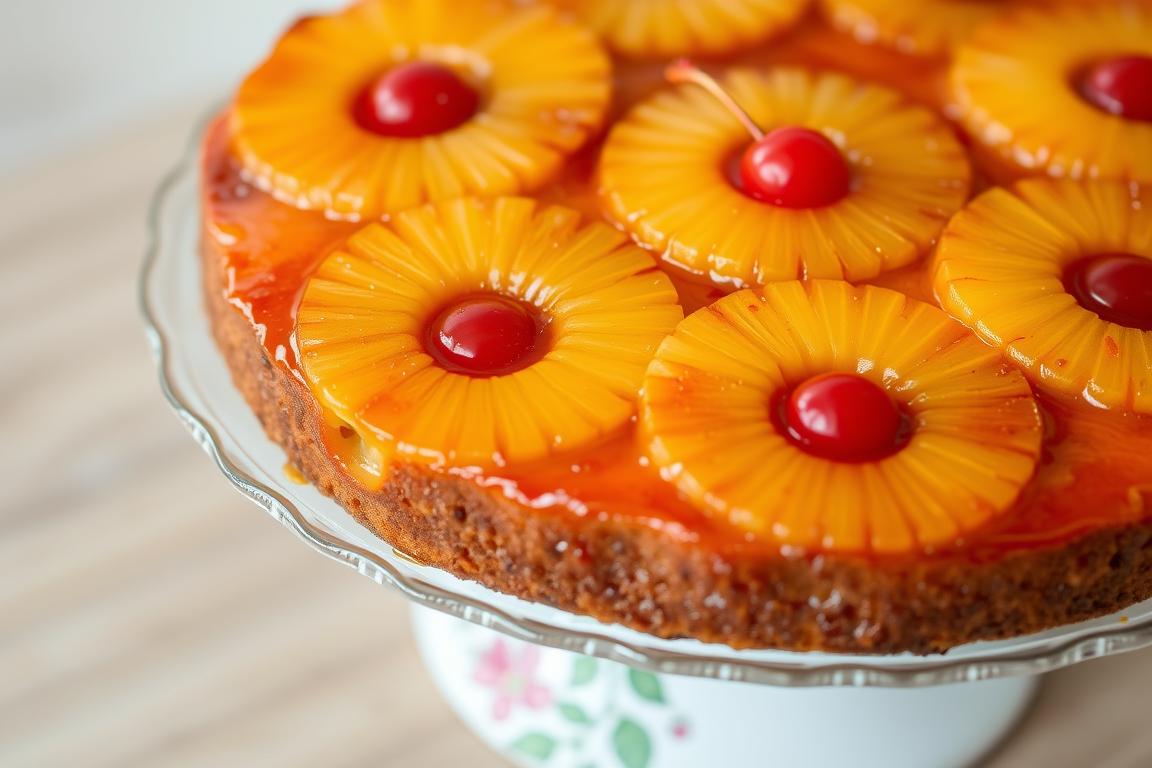There’s something magical about a vintage cake that transports us back to simpler times. These classic desserts aren’t just sweet treats—they’re edible history, carrying stories of family gatherings, celebrations, and traditions passed down through generations. Vintage cakes are characterized by their intricate piping techniques, classic flavor combinations, and time-honored recipes that have stood the test of time.
Whether it’s the perfectly piped buttercream borders of a traditional birthday cake or the delicate layers of a Victorian sponge, these nostalgic confections continue to captivate bakers and dessert lovers alike. Join us as we explore the rich history, beloved recipes, and modern revival of vintage cakes that are making a delicious comeback in today’s kitchens.
History of Vintage Cakes
The story of vintage cakes is as layered as the desserts themselves. Many of our most beloved cake recipes emerged during the 19th and early 20th centuries, when home baking became more accessible due to innovations such as chemical leavening agents and more reliable ovens.
The Victorian era (1837-1901) saw the rise of elaborate, multi-tiered cakes adorned with intricate decorations. Queen Victoria herself helped popularize the Victoria Sponge, a simple yet elegant cake filled with jam and cream that remains a classic to this day. This period marked the beginning of cakes as centerpieces for special occasions rather than just everyday treats.
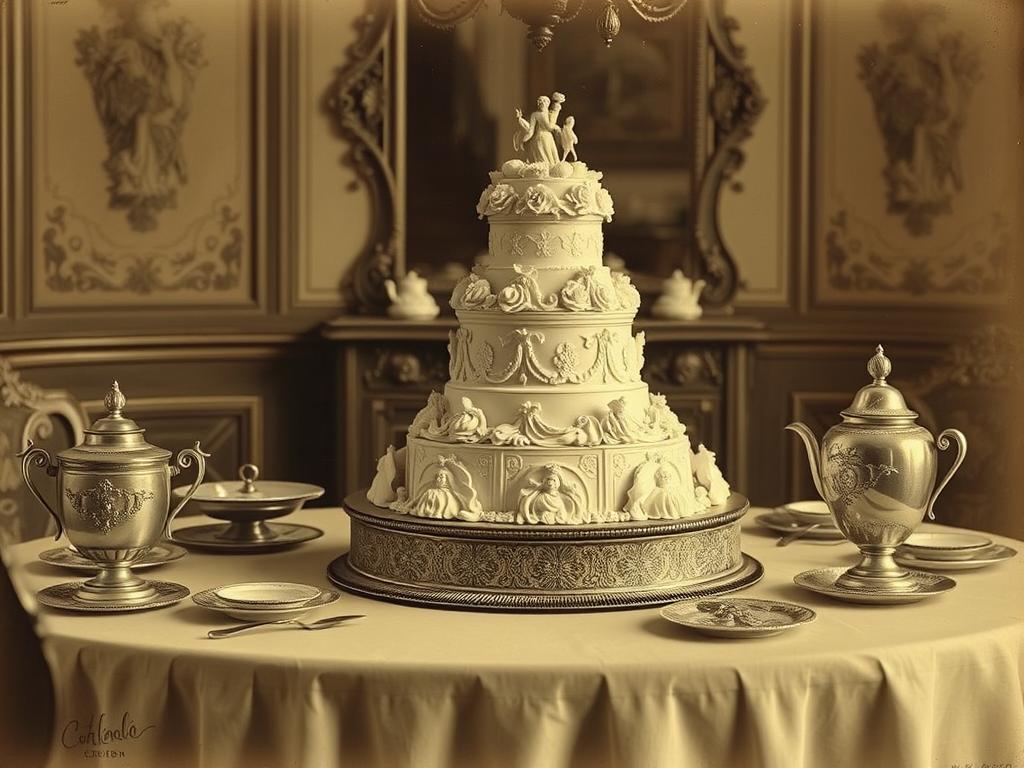
The early 20th century introduced us to the Devil’s Food Cake, which first appeared in print around 1902. This decadent chocolate cake earned its name from its sinfully rich texture and deep color—a stark contrast to the lighter Angel Food Cake that had been popular previously.
The 1930s introduced us to the vibrant Red Velvet Cake, though its predecessor, the Mahogany Cake, had been around longer. The distinctive red color originally came from a chemical reaction between cocoa powder, vinegar, and buttermilk, though modern versions often use food coloring.
Pineapple Upside-Down Cake gained immense popularity in the 1920s after the Hawaiian Pineapple Company (later Dole) sponsored a contest calling for pineapple recipes. The clever design of caramelized fruit at the bottom of the pan, which becomes the top when inverted, captivated home bakers across America.
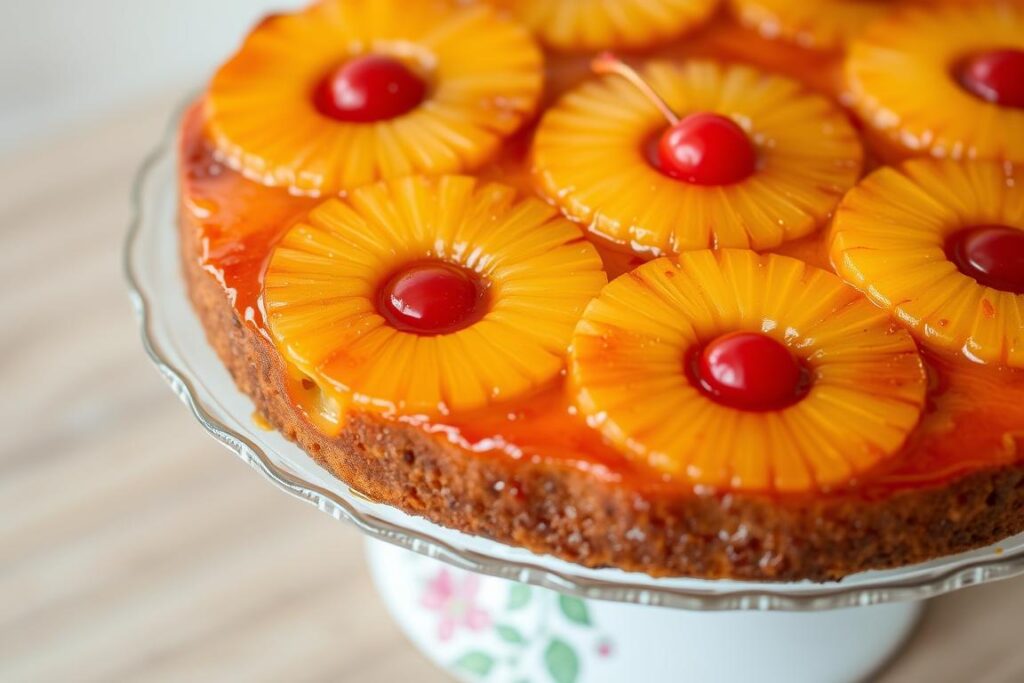
The mid-20th century saw the rise of convenience baking with cake mixes, but also sparked creativity with recipes like Hummingbird Cake (featured in Southern Living in 1978) and unique creations like Coca-Cola Cake that incorporated beloved regional products.
5 Most Beloved Vintage Cake Recipes
These timeless recipes have graced family tables for generations, each one carrying its unique history and charm, making them perfect for special occasions or whenever you crave a taste of nostalgia.
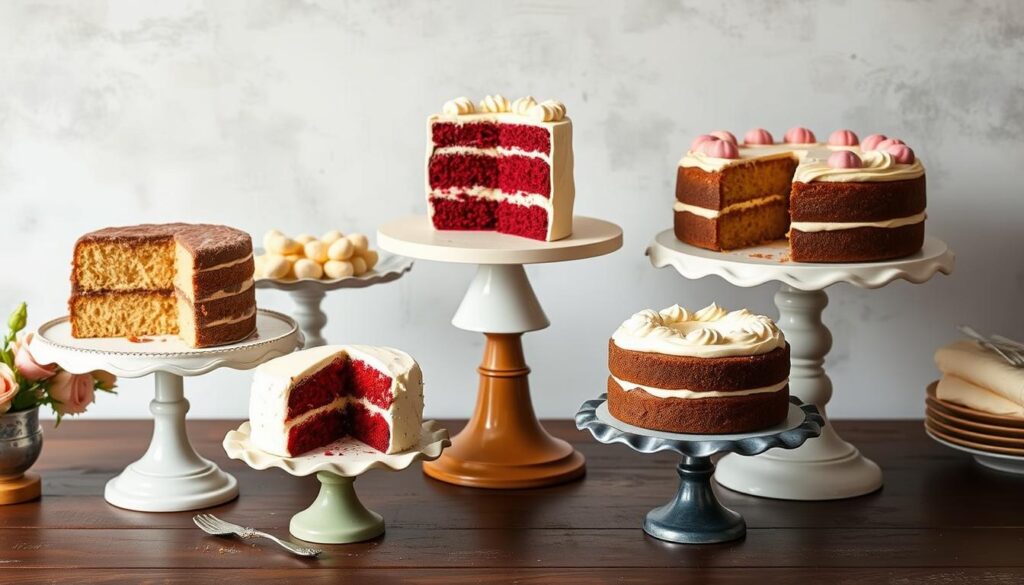
Classic Pound Cake
The pound cake earned its name from its original recipe, which called for one pound each of flour, butter, sugar, and eggs. This is versatile yet straightforward. Cake has been a staple since the 1700s.
Ingredients:
- 1 cup (2 sticks) unsalted butter, room temperature
- 2 cups granulated sugar
- 4 large eggs, room temperature
- 3 cups all-purpose flour
- 1/2 teaspoon baking powder
- 1/2 teaspoon salt
- 1 cup whole milk, room temperature
- 2 teaspoons vanilla extract
Steps:
- Preheat oven to 325°F. Grease and flour a 10-inch tube pan.
- Cream butter and sugar until light and fluffy (about 5 minutes).
- 3 Add4. 5. eggs one at a time, beating well after each addition.
- Combine dry ingredients in a separate bowl.
- Alternate adding dry ingredients and milk to the butter mixture, beginning and ending with flour.
- 6 Stir in vanilla extract.
- 7 Pour batter into prepared pan and bake for 1 hour and 15 minutes, or until a toothpick comes out clean.
Pro Tip: For the most tender crumb, make sure all ingredients are at room temperature before mixing. This allows for better incorporation of air into the batter, resulting in a more tender crumb.
Ingredients:
- 2 tablespoons cocoa powder (not Dutch-processed)
- 2 oz red food coloring (or one tablespoon if using gel coloring)
- 1/2 cup shortening
- 1 1/2 cups granulated sugar
- 2 eggs
- 2 1/2 cups cake flour
- 1 teaspoon salt
- 1 cup buttermilk
- 1 teaspoon vanilla extract
- 1 tablespoon vinegar
- 1 teaspoon baking soda
For the original ermine frosting:
- 5 tablespoons flour
- 1 cup milk
- 1 cup butter, softened
- 1 cup granulated sugar
- 1 teaspoon vanilla extract
Pro Tip: The original red velvet cake used ermine frosting (also called boiled milk frosting), not cream cheese frosting. It’s lighter and less sweet, allowing the subtle chocolate flavor to shine.
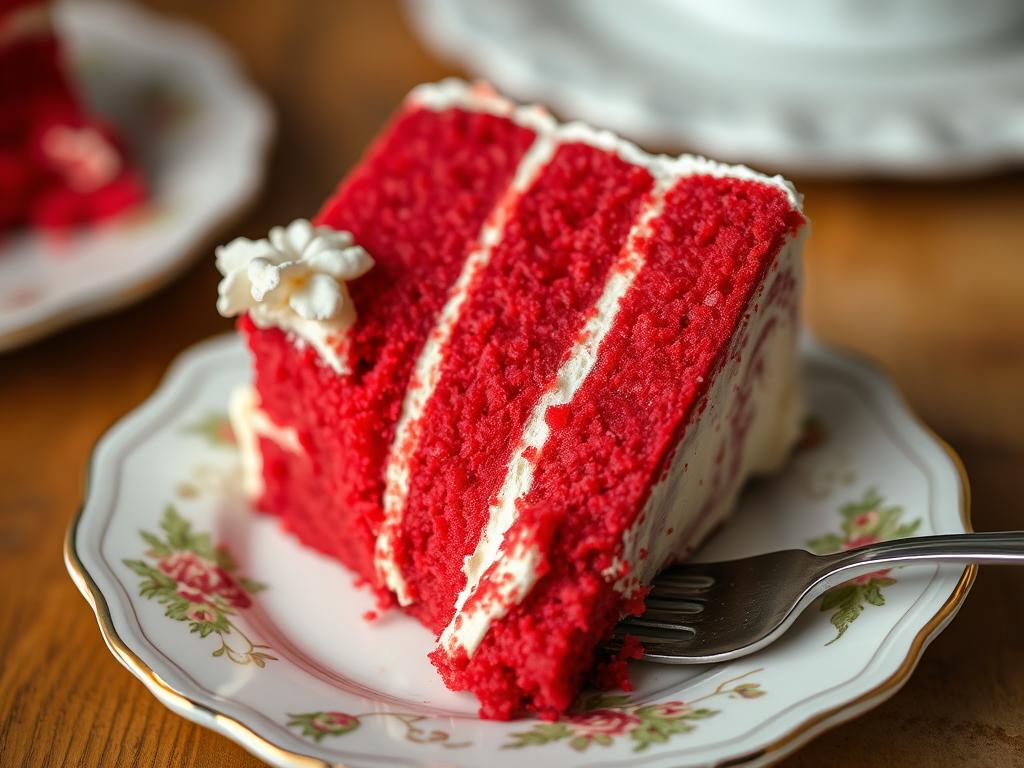
Hummingbird Cake
This Southern classic first appeared in Southern Living magazine in 1978 and quickly became their most requested recipe. With flavors of banana, pineapple, and pecans, it’s a tropical delight.
Ingredients:
- 3 cups all-purpose flour
- 2 cups granulated sugar
- 1 teaspoon baking soda
- 1 teaspoon ground cinnamon
- 1/2 teaspoon salt
- 3 large eggs, beaten
- 1 1/2 cups vegetable oil
- 1 1/2 teaspoons vanilla extract
- 1 (8 oz) can crushed pineapple, undrained
- 2 cups mashed ripe bananas (about four medium)
- 1 cup chopped pecans
For the cream cheese frosting:
- 16 oz cream cheese, softened
- 1 cup butter, softened
- 4 cups powdered sugar
- 2 teaspoons vanilla extract
Pro Tip: Toast the pecans before adding them to the batter to enhance their flavor. Spread them on a baking sheet and bake at 350°F for 5-7 minutes until fragrant.
German Chocolate Cake
Despite its name, this cake isn’t German at all! It was named after Samuel German, who created a type of dark baking chocolate for Baker’s Chocolate Company in 1852.
Ingredients:
- 4 oz German’s sweet chocolate
- 1/2 cup boiling water
- 1 cup butter, softened
- 2 cups sugar
- 4 egg yolks
- 1 teaspoon vanilla
- 2 1/2 cups cake flour
- 1 teaspoon baking soda
- 1/2 teaspoon salt
- 1 cup buttermilk
- 4 egg whites, stiffly beaten
For the coconut-pecan frosting:
- 1 cup evaporated milk
- 1 cup sugar
- 3 egg yolks, slightly beaten
- 1/2 cup butter
- 1 teaspoon vanilla
- 1 1/3 cups flaked coconut
- 1 cup chopped pecans
Pro Tip: Don’t overbeat the cake batter after adding the flour, as this can develop the gluten and make the cake tough. Mix just until the ingredients are combined.
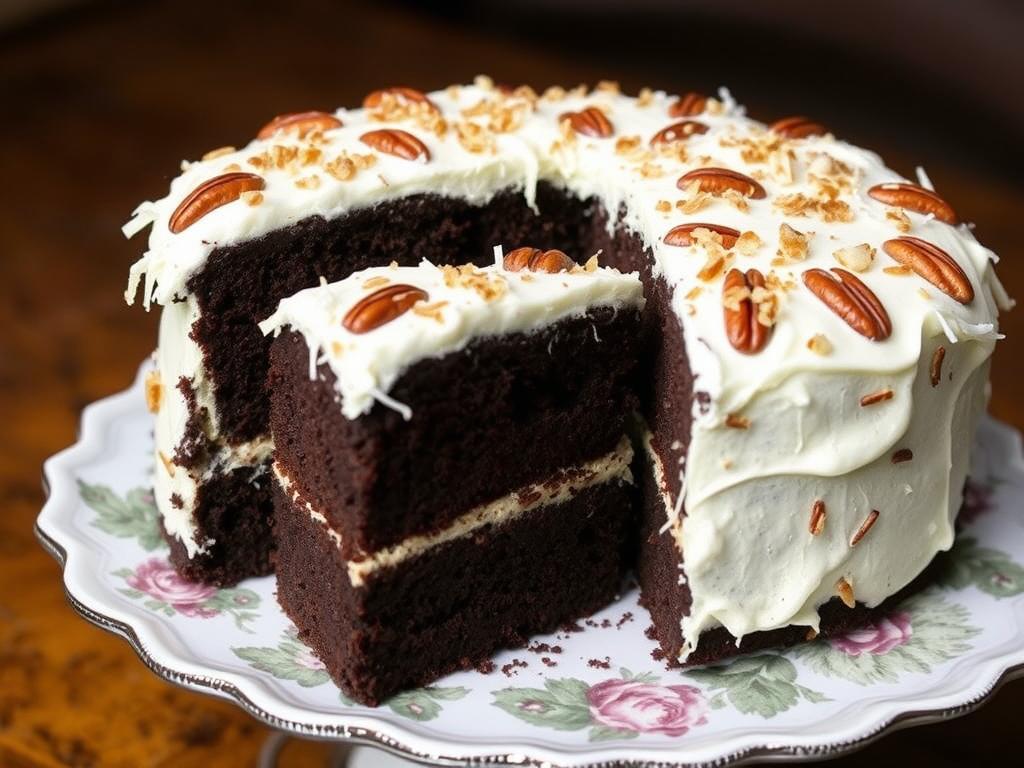
Angel Food Cake
This heavenly light cake dates back to the late 19th century and achieves its airy texture through the use of whipped egg whites and no added fat. It serves as 2—the perfect canvas for fresh berries and whipped cream.
Ingredients:
- 1 1/4 cups cake flour
- 1 3/4 cups granulated sugar, divided
- 1/4 teaspoon salt
- 1 1/2 cups egg whites (about 12 large eggs), room temperature
- 1 1/2 teaspoons cream of tartar
- 1 teaspoon vanilla extract
- 1/2 teaspoon almond extract (optional)
Steps:
- Preheat oven to 325°F.
- Sift together flour, 3/4 cup sugar, and salt.
- Beat egg whites until foamy, then add cream of tartar.
- 4. 4. 4 Continue beating, gradually adding the remaining 1 cup of 5. sugar until stiff peaks form.
- 5. Fold in extracts, then gently fold in the flour mixture in batches.
- 6 Pour into an ungreased 10-inch tube pan and bake for 40-45 minutes.
- 7. Invert the pan and let it cool completely before removing the cake.
Pro Tip: Use cake flour for a lighter texture. The lower protein content results in less gluten development, creating that signature airy crumb that Angel Food Cake is known for.
Why Vintage Cakes Are Trending Again
In our fast-paced digital world, there is a growing desire to slow down and reconnect with simpler times. Vintage cakes are experiencing a remarkable revival, appearing on social media feeds, in upscale bakeries, and at celebratory gatherings. But what’s driving this delicious comeback?
Nostalgia Factor
Many bakers are rediscovering recipes that remind them of childhood, seeking comfort in familiar flavors and the memories they evoke. There’s something deeply satisfying about recreating a cake that your grandmother might have made, connecting generations through shared culinary traditions.
Reaction to Modern Excess
After years of over-the-top cake trends (remember the unicorn cake?), many are embracing the elegant simplicity of vintage designs. Classic buttercream piping techniques and traditional flavor combinations offer a refreshing alternative to complicated modern creations.
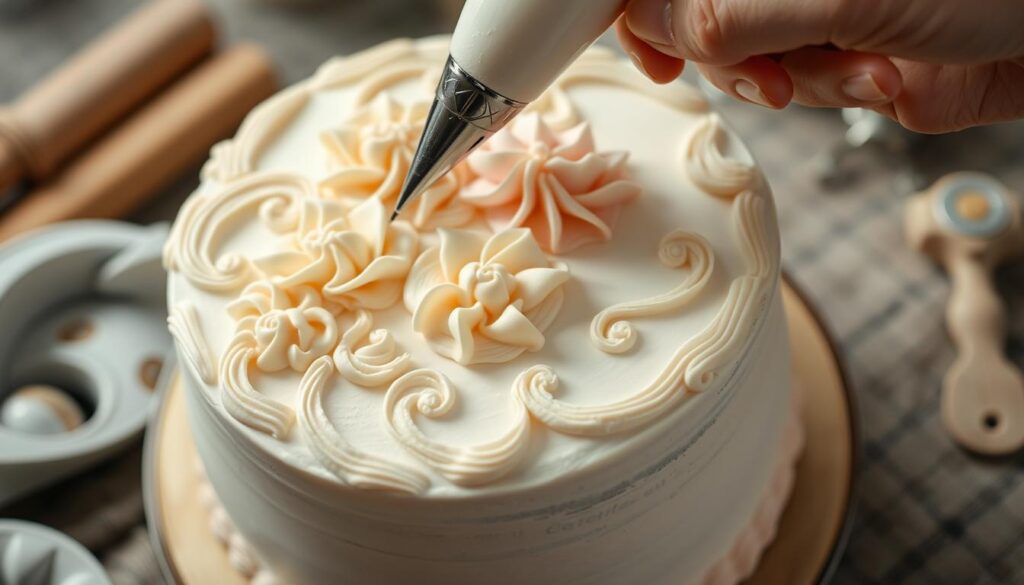
Artisanal Revival
The farm-to-table movement has extended to baking, with more people appreciating handcrafted goods made with quality ingredients. Vintage cakes align perfectly with this ethos, emphasizing skill and craftsmanship over shortcuts and artificial additives.
Social Media Showcase
Platforms like Instagram and TikTok have given vintage cake techniques new visibility. The visual appeal of a beautifully piped cake makes for compelling content, inspiring a new generation to try their hand at these time-honored designs.
This revival isn’t just about recreating the past exactly as it was. Today’s bakers are putting fresh spins on vintage recipes—using natural food colorings, incorporating global flavors, and adapting techniques for modern equipment. The result is a delightful blend of nostalgia and innovation that honors tradition while embracing the present.
Where to Find Vintage Cake Inspiration
Would you be ready to dive into the world of vintage cakes? Here are some valuable resources to help you start your journey into nostalgic baking:
Heritage Cookbooks
Dust off family recipe collections or explore these classic publications:
- The Fannie Farmer Cookbook (original 1896 edition) – Contains many early American cake recipes with detailed instructions.
- Betty Crocker’s Picture Cook Book (1950) – Features mid-century classics with charming illustrations.
- Southern Living’s Classic Southern Desserts – Compilation of beloved Southern cake traditions.
Specialized Blogs & Websites
These online resources celebrate vintage baking techniques:
- The Cake Blog – Features tutorials on classic piping techniques.
- Vintage Cake Company – Showcases beautiful vintage-inspired designs.
- King Arthur Baking – Offers historically accurate recipes with modern instructions.
Museums & Historical Societies
These institutions preserve culinary history:
- The Smithsonian’s Food History Collection: Archives of American Food Traditions.
- Local historical societies often have regional recipe collections.
- Living history museums often offer baking demonstrations that utilize period techniques.
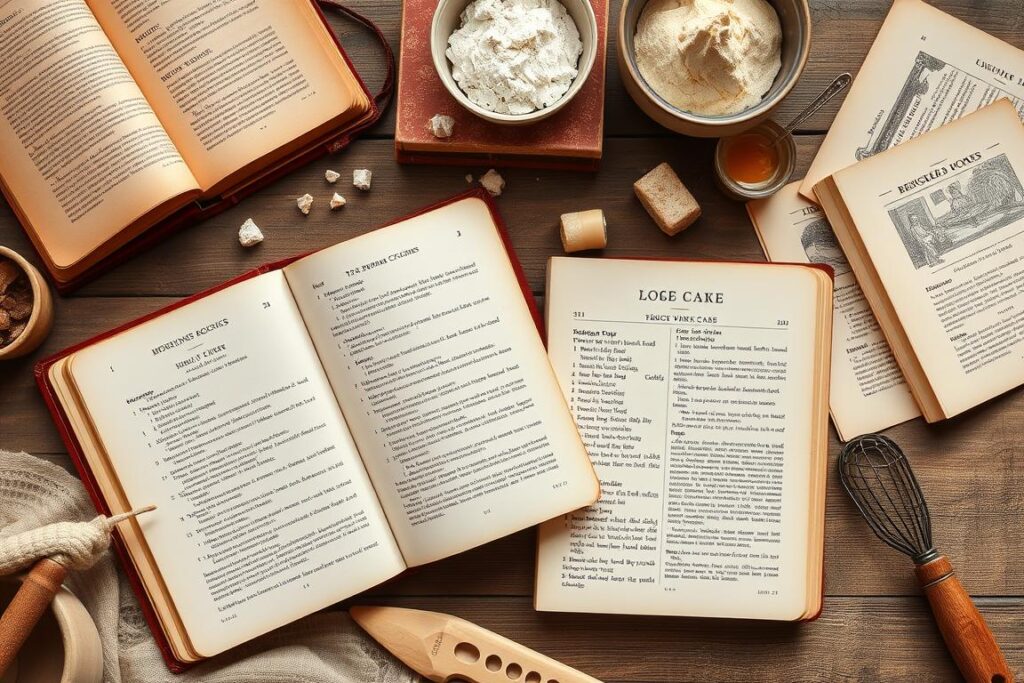
Don’t forget to look closer to home! Family recipe boxes, community cookbooks, and conversations with older relatives can yield treasured recipes with personal connections that make baking even more meaningful.
Ready to Bake a Slice of History?
Vintage cakes offer more than just delicious flavors—they provide a connection to our culinary heritage and the joy of creating something truly special by hand. Whether you’re recreating your grandmother’s signature recipe or trying a classic cake for the first time, these timeless desserts bring warmth and nostalgia to any occasion.
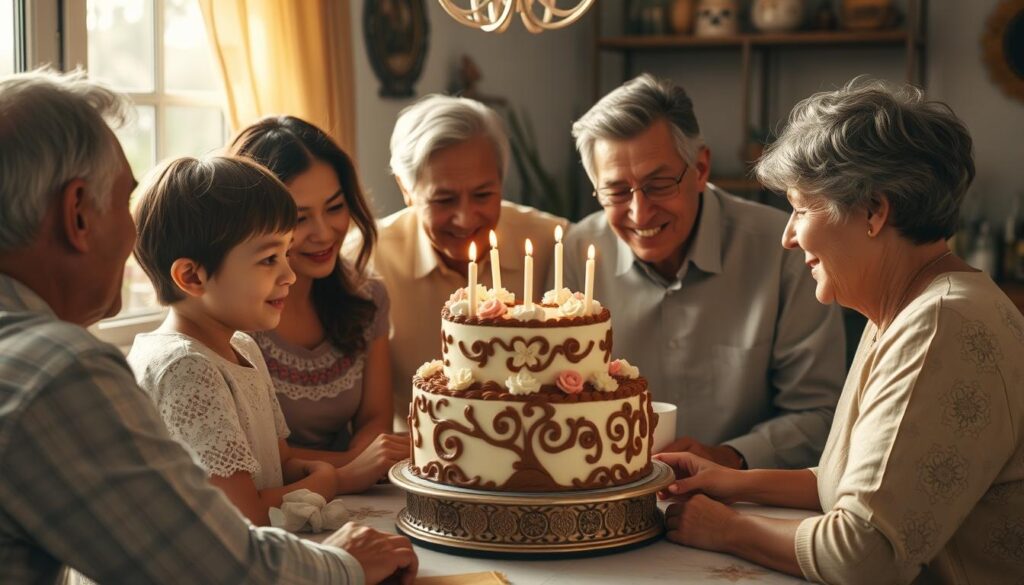
We’d love to see your vintage cake creations! Try one of the recipes we’ve shared, put your spin on a classic, or dust off a treasured family recipe. The joy of vintage baking is in both the process and the delicious results.
Related Article: Fabulous Barbie Birthday Cake
Learn More: 900+ VINTAGE CAKE IDEAS in 2025
